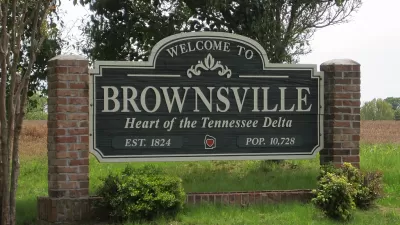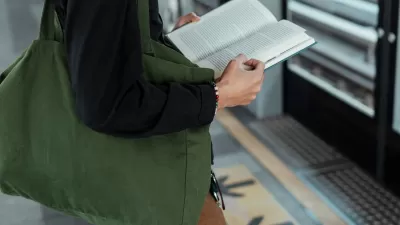A new book posits that truly successful communities have a strong economic base and a firmly rooted sense of place.

A new book by William Fulton outlines a simple equation: “Place plus prosperity equals a successful community.” According to an article by Alan Ehrenhalt in Governing, Fulton’s book examines the “subtle relationship between wealth and sense of place.” Many American communities, Ehrenhalt argues, have one or the other, but not both.
For Fulton, “A fully realized city needs to contain all the benefits of an integrated urban existence: close proximity of its citizens to the fulfilment of their ordinary human needs, the ability to walk and bike everywhere, an efficient transit system and a rich tapestry of everyday urban life.”
Ehrenhalt writes, “What is crucial on the prosperity side, Fulton believes, is a business base that builds on the tenets of place that lie beneath commercial prosperity.” Meanwhile, “The sense of place can be, and most often is, the product of a slow process of evolution. Or it can result from an intense desire to create something that did not exist before.”
Ehrenhalt provides examples from around the country: built-from-scratch cities like Las Vegas, sprawling suburban landscapes like Southern California, and former industrial powerhouses like Pittsburgh that have reinvented themselves for a new economy. While many places haven’t yet achieved Fulton’s vision, Ehrenhalt writes that the experiments happening in cities and towns all over the United States shows that identity and prosperity can go hand in hand.
FULL STORY: Place and Prosperity: An Urban Success Formula

Americans May Be Stuck — But Why?
Americans are moving a lot less than they once did, and that is a problem. While Yoni Applebaum, in his highly-publicized article Stuck, gets the reasons badly wrong, it's still important to ask: why are we moving so much less than before?

Using Old Oil and Gas Wells for Green Energy Storage
Penn State researchers have found that repurposing abandoned oil and gas wells for geothermal-assisted compressed-air energy storage can boost efficiency, reduce environmental risks, and support clean energy and job transitions.

Placekeeping: Setting a New Precedent for City Planners
How a preservation-based approach to redevelopment and urban design can prevent displacement and honor legacy communities.

San Francisco’s Muni Ridership Grew in 2024
The system saw its highest ridership since before the Covid-19 pandemic, but faces a severe budget shortage in the coming year.

Colorado Lawmakers Move to Protect BRT Funding
In the face of potential federal funding cuts, CDOT leaders reasserted their commitment to planned bus rapid transit projects.

Safe Streets Funding in Jeopardy
The Trump administration is specifically targeting bike infrastructure and other road safety projects in its funding cuts.
Urban Design for Planners 1: Software Tools
This six-course series explores essential urban design concepts using open source software and equips planners with the tools they need to participate fully in the urban design process.
Planning for Universal Design
Learn the tools for implementing Universal Design in planning regulations.
Heyer Gruel & Associates PA
City of Moreno Valley
Institute for Housing and Urban Development Studies (IHS)
City of Grandview
Harvard GSD Executive Education
Salt Lake City
NYU Wagner Graduate School of Public Service
City of Cambridge, Maryland




























